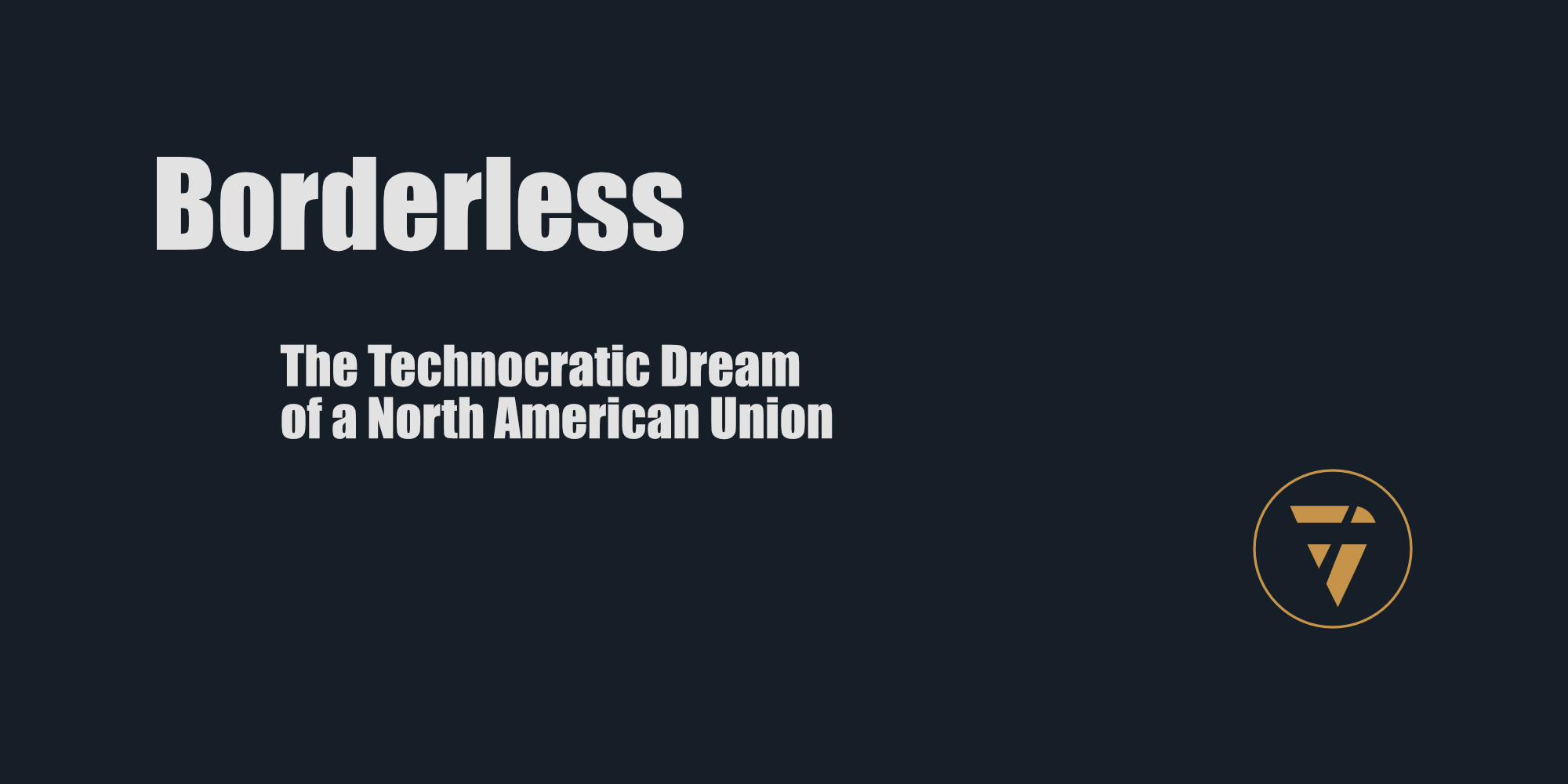Borderless

The Technocratic Dream of a North American Union
The idea that a vast, technocratic superstate could stretch from Greenland to the Caribbean, encompassing Canada, the United States, and even parts of South America, sounds like a speculative geopolitical fantasy. But in the 1930s, during the Great Depression, this concept found a serious following in the Technocracy Movement—an ideology that promoted the governance of society by scientifically and technically trained experts rather than elected politicians.
This movement was not merely a theoretical exercise; it was a highly structured organization with uniforms, rituals, and detailed economic blueprints. It proposed an economic system based on energy usage rather than money, advocating for the replacement of capitalist markets with a meticulously planned economy directed by engineers and technocrats. The movement's territorial vision—the "Technate of America"—was depicted in maps and promotional materials, imagining a North American economic and political union governed by rational scientific management rather than democratic debate.
A Map that explains why Trump wants Greenland, Canada and Panama
by u/TheendlesswaveM in onguardforthee
Though largely forgotten, Technocracy's influence did not vanish completely. Remarkably, one of its key figures in Canada, Joshua Haldeman, would later become the grandfather of Elon Musk. This fascinating link between a historical movement and one of the most influential tech entrepreneurs of the modern era raises profound questions about the endurance of technocratic ideals in today’s world.
The Birth of Technocracy: A Reaction to Economic Chaos
The Technocracy movement was born out of the Great Depression, a time of economic collapse that left millions unemployed and cast doubt on the effectiveness of free-market capitalism. With nations struggling to stabilize their economies, some intellectuals and engineers saw an opportunity to overhaul the entire system.
Howard Scott, an American engineer, emerged as the leading proponent of Technocracy Incorporated, which he founded in 1933. He envisioned a system where society would be structured and governed by engineers, scientists, and technical experts—individuals supposedly free from political bias and corruption.
Scott and his followers rejected capitalism’s price system, arguing that money was an outdated tool for measuring economic value. Instead, they proposed an "energy theory of value," where resources and production would be allocated based on the amount of energy expended to produce goods and services. This idea of a resource-based economy prefigures some contemporary discussions about post-capitalist economic models, including those promoted by futurists and AI-driven planning advocates.
The movement's most radical aspect was its vision of governance: a society without traditional politics, where decisions would be made based on data, logistics, and scientific principles rather than popular opinion. This was not just a critique of capitalism but a complete rejection of democracy itself in favour of an authoritarian rule by engineers.
The Technate of America: A Continent Governed by Engineers
The most striking legacy of the Technocracy movement is its map of the proposed "Technate of America," an enormous technocratic state that would absorb the entire North American continent and parts of the Pacific Basin.
This envisioned superstate included:
- Greenland and Canada, to integrate their vast natural resources into a centralized, efficient economic system.
- The United States, restructured under a non-political, scientific administration.
- Central America and parts of South America, incorporated for logistical and resource-based purposes.
- Pacific territories, such as Hawaii and strategic military outposts, designated as key defence points.
The map also included “defence bases” at strategic points, such as Attu (Alaska), Pago Pago (American Samoa), Newfoundland, and Georgetown (Guyana), indicating a focus on geopolitical security.
Technocrats believed that national borders were inefficient artifacts of history and that a rationally planned economy should replace fragmented national economies. They envisioned a future where governance would be dictated not by citizenship or political ideology, but by data, technology, and efficiency.
Canada’s Role and the Influence of Joshua Haldeman
Canada played a significant role in the Technocracy movement, with one of its most notable figures being Joshua Haldeman.
Haldeman was a chiropractor and political activist who became the leader of Technocracy Incorporated in Canada. He promoted the movement’s ideas across the country, advocating for a future where economic and social decisions would be made by technocrats rather than politicians.
His dedication to technocracy was so strong that he gave public lectures, published pamphlets, and organized meetings across Canada to spread the ideology.
Haldeman’s interest in technological and economic self-sufficiency would later manifest in his grandson, Elon Musk. Musk's companies—Tesla, SpaceX, Neuralink, and The Boring Company—all revolve around themes of technological control, automation, and centralized efficiency, echoing many of the movement's ideals.
While Musk himself has never publicly linked his worldview to his grandfather’s beliefs, it is impossible to ignore the parallels. His emphasis on scientific governance, automation, and space colonization mirrors the Technocratic Movement’s rejection of traditional politics in favour of expert-led decision-making.
The Fascist Aesthetic of Technocracy
One of the most controversial aspects of the Technocracy movement was its quasi-fascist aesthetics and rituals.
Members of Technocracy Inc. wore a uniform consisting of a double-breasted suit, a gray shirt, and a blue tie, with the Technocracy logo (a red circular emblem). They drove gray-painted cars and even saluted each other in public.
The movement’s rhetoric echoed themes common in Fascist Italy and Nazi Germany, promoting the idea of a strong, centralized state run by a select group of elites. While the movement did not advocate for racial superiority, it shared with European fascists an authoritarian rejection of democracy and a belief in a rigidly hierarchical social order.
This militaristic and ritualistic approach may have contributed to its eventual decline. Despite its emphasis on rational governance, Technocracy Incorporated struggled to shed its authoritarian overtones, which alienated many potential followers.
The Legacy of Technocracy: Echoes in Modern Governance
While the Technocracy movement faded by the mid-20th century, its influence persists in surprising ways:
- The Rise of Technocratic Governments
- Today, we see elements of technocratic rule in modern China, Singapore, and the European Union, where bureaucrats and experts wield enormous power over policymaking.
- Silicon Valley’s Technocratic Ambitions
- Figures like Elon Musk, Jeff Bezos, and Mark Zuckerberg advocate for AI-driven decision-making, automation, and centralized control of economic systems, reflecting many of the core beliefs of the old Technocracy movement.
- Post-Capitalist Economic Theories
- The concept of resource-based economies, digital currencies, and automation replacing labour aligns with Technocracy Inc.’s rejection of the price system.
- Geoengineering and Planetary Management
- The push for climate engineering, AI governance, and smart cities is deeply technocratic, relying on engineers rather than politicians to make key decisions about humanity’s future.
A Dormant Ideology in a New Era
The Technocracy Movement was an ambitious and controversial vision that proposed a North American superstate governed by engineers rather than politicians. While it ultimately failed as a political movement, its philosophy of expert-led governance and technological control still resonates today—whether in Silicon Valley, global bureaucracies, or AI-driven policymaking.
The fact that Elon Musk's grandfather was one of its most prominent Canadian leaders only adds to the mystery of how these ideas have subtly shaped modern technological and political landscapes.
Are we living in the early days of a new Technate? Perhaps the next great transformation of society will not be driven by elected leaders, but by artificial intelligence, automation, and a new breed of unelected, data-driven elites.
Our borders mean nothing to them.
This is what I’m working on. Tell me what you think, I enjoy the conversation! Subscribe and follow the work in real time.
Thanks!
B

Technocracy wasn’t just a fringe idea, it envisioned a North American superstate run by engineers, not politicians. Musk’s grandfather led the movement in Canada. Coincidence, or echoes of a new era? AI, automation, and expert rule are closer than you think.
PS -






